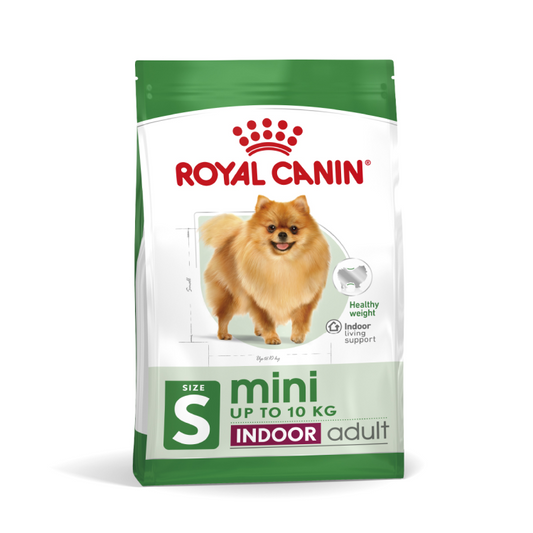It does not matter their age, breed or temperament, it is essential to train your dog.
It is a fact we love our dogs running around and playing with us. We agree it brings fun in the house but would you like it if your puppy chews off your favourite shoes now and then or if they pee on your expensive carpet?
We bet the answer is ‘NO’, this is why training is important so that your canine friend is not only your play buddy but also your companion. With the right training, you can teach your furry friend to do many things.
Did you know you can also teach your dog to help with household chores?
Well, to gain such a helping hand you need to know the right and the easiest way to train your dog. In this blog that is what we are going to learn.

Basics To Tricks - Easiest Way To Train A Dog
Training your dog well is a crucial and fulfilling responsibility for any dog owner. However, it can be difficult to know where to begin. In celebration of 'National Train Your Dog Month' in January, we would like to offer some useful tips to assist you and your furry friend in getting started.
Use Positive Reinforcement
Positive reinforcement is a training method that involves acknowledging and rewarding the desired behaviours of your dog while disregarding the undesirable ones. Rewards can come in the form of treats, playing with toys, giving pets, or anything that resonates with your dog.
These effective techniques can even be utilized to teach well-trained dogs to use innovative doggy doorbells as a means of signalling when they need to go outside to relieve themselves.
Manage your expectations and mood.
It's important to remember that not every training session will go perfectly. Instead of getting frustrated and taking it out on your dog, try adjusting your behaviour and attitude to support your dog's ability and confidence in learning. Remember, if you remain calm, your dog is likely to be calm as well.
Find the right reward.
Certain dogs have a strong motivation for food and will display great enthusiasm when offered any type of edible treat as a form of reward. On the other hand, some dogs have preferences and may favour soft and chewy treats over hard and crunchy ones.
However, some dogs simply lack interest in food altogether. If this is the situation with your dog, it is worth trying alternative rewards such as engaging in a brief play session with their beloved toy or providing ample affection.

Make Training Fun
If you or your dog are not enjoying the learning process, why would either of you want to learn? To prevent frustration, it is recommended to keep training sessions brief, maintain a light tone, and treat your dog fairly. By ensuring that both of you are having a good time, your training sessions will be significantly more successful.
It’s easy to get caught up in the end goal of training, but remember to praise your dog for any small improvement.
Start Early and Be Consistent
It is crucial to commence training your dog as soon as you bring them home. Puppies have a remarkable ability to absorb information and acquire new commands rapidly, much like sponges. Maintaining consistency throughout the training process is essential.
Employ the same cues and commands consistently, and ensure that all members of the family adhere to the same training approach to avoid any confusion.
Build up in stages.
Commencing with smaller steps can be advantageous, especially when dealing with intricate behaviours such as "stay, " or when attempting to eliminate undesirable behaviour.
Consider breaking down behaviours into smaller components. For instance, at the initial stage of training "come, " acknowledge and reward your dog when they make even a single step towards you.
It becomes much simpler to progress and gradually develop the complete behaviour once your puppy starts to understand it.
Socialize Your Dog
Ensuring your dog's development is essential, and socialization plays a key role in achieving this. From a young age, it is important to introduce your dog to different environments and other dogs. This practice helps prevent the development of fear and aggression towards new situations, while also fostering their confidence.
Use Clear and Distinct Commands
When it comes to training dogs, clear communication is crucial. Dogs respond best to simple and concise commands such as sit, stay, come, and down. Using hand signals in conjunction with verbal cues can help reinforce the commands even further.
It is important to be consistent with your commands and signals so that your dog can learn and respond appropriately. Over time, your dog will become more responsive to these fundamental commands, making training easier and more effective.

Practice in Different Settings
Ensure that training is conducted in multiple locations to enhance the dog's ability to generalize commands and respond consistently. This can be achieved by practising commands both indoors and outdoors.
Keep your dog’s temperament in mind.
Every dog possesses unique temperaments. Similar to children, various breeds acquire knowledge and develop at varying paces. Certain dogs exhibit stubbornness and will oppose your commands frequently.
On the other hand, some dogs will go out of their way to satisfy you. It might be necessary for you to adapt your training methods to accommodate your dog's temperament.
Redirect Unwanted Behavior
Redirecting your dog's attention to positive behaviour instead of punishing them for unwanted actions is a more effective training method. For instance, if your dog starts chewing on furniture, offer them a chew toy as an alternative.
This not only diverts their attention from the negative behaviour but also reinforces positive behaviour. Punishing your dog for undesired actions can increase anxiety and stress, which can lead to aggressive behaviour.
Redirecting their focus towards positive reinforcement helps build trust and strengthens the bond between you and your furry friend.
Stay Firm But Gentle
When correcting your dog's behaviour, it is important to maintain a firm but gentle approach. It is best to refrain from yelling or using physical punishment, as this can lead to fear and a lack of trust. Instead, utilize a strong tone of voice and consider implementing time-outs or withdrawing attention when necessary.
FAQ: Easiest Way To Train A Dog
Is it easy to train a dog?
The trainability of a dog is determined by its breed and individual temperament. While certain dogs may be more responsive to training than others, it is important to note that all dogs are capable of learning when approached correctly.
How to train my dog to sleep in his bed?
To train your dog to sleep in his bed, start by placing treats or toys in the bed, creating a positive association. Encourage him to lie down and reward him with praise.
How to train a dog to stop barking?
To train a dog to stop barking, identify the cause, and use commands like "quiet, " and reward silence. Consistency is key. Employ positive reinforcement, redirect their focus, and consider professional training for persistent issues.
Conclusion
Training your dog doesn't have to be a daunting task. With the right approach and consistency, you can easily teach your furry friend new commands and behaviours. Remember to use positive reinforcement techniques, such as rewards and praise, to motivate and encourage your dog during the training process.
Additionally, be patient and understanding, as each dog learns at their own pace. By following these tips, you'll be amazed at how quickly your dog can learn and become a well-behaved companion. So what are you waiting for?
Start implementing these training techniques today and enjoy the benefits of a well-trained dog!






